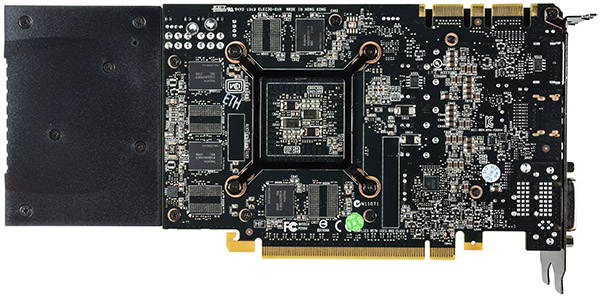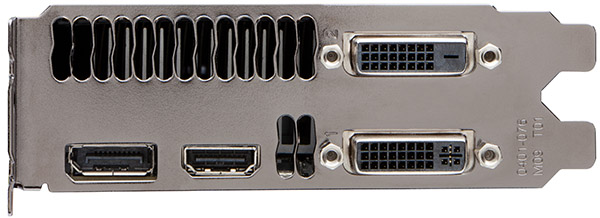GeForce GTX 760 Review: GK104 Shows Up (And Off) At $250
With its last graphics card introduction until the end of Fall, Nvidia isn't trying to impress anyone with groundbreaking performance. Rather, the company is pulling better-than GeForce GTX 660 Ti-class frame rates to a $250 price point, creating value.
Nvidia Fires Off One Last 700-Series Card For The Summer
In the last four months, we watched Nvidia revamp its high-end graphics card line-up using year-old GPUs based on the Kepler architecture. Hey, I’m not hating. GK110 wasn’t even available to desktop gamers prior to the GeForce GTX Titan’s introduction. And while I wasn’t a huge fan of GeForce GTX 780, I certainly “got” the reason for a cut-back version of the $1000 flagship. GeForce GTX 770 was a more practical introduction, replacing GeForce GTX 680 with a little extra speed at a dramatically lower price—and the rebranded GK104-based board earned our Smart Buy award as a result.
And now we have another graphics card based on GK104 to test: the GeForce GTX 760. In case you’re counting, that makes an astounding six models based on one GPU (GeForce GTX 690, 680, 670, 660 Ti, 770, and now the 760). Talk about getting your mileage worth.
Upon its release, the GeForce GTX 760 introduced GeForce GTX 670- and Radeon HD 7950-class speed at a $250 price point, displacing the Tahiti-based Radeon HD 7870 LE with even more performance per dollar. As a result, this GK104-powered card is one of our favorite recommendations for frame rate-hungry gamers.
Of course, those six boards utilize GK104 in varying configurations, from its full 1536 CUDA cores down to 1344. Actually, there was an OEM-only GeForce GTX 660 that Nvidia launched last year with 1152 CUDA cores (or just six of the GPU’s eight total SMX blocks) enabled...
GK104 Rides Again
...and that’s the arrangement being introduced today. Nvidia enables six of GK104’s eight Streaming Multiprocessors across three or four of its Graphics Processing Clusters. This is similar to the approach taken on GeForce GTX 780, equipped with a trimmed GK110 GPU. In essence, the company doesn’t always know which of its chips’ resources are going to be defective. So, it can turn off two SMXes in one GPC or one SMX in two different GPCs.


In either case, you end up with 1152 total CUDA cores and 96 texture units. GK104’s back-end remains intact though, consisting of four ROP clusters that output eight 32-bit integer pixels per clock each, maxing out at 32. Similarly, four 64-bit memory controllers create a 256-bit aggregate interface.
Get Tom's Hardware's best news and in-depth reviews, straight to your inbox.
At least at first, GeForce GTX 760s will sport 2 GB of GDDR5 memory operating at 1502 MHz, just like the GeForce GTX 670 and 680, pushing up to 192.2 GB/s. This is probably the 760's biggest advantage against GeForce GTX 660 Ti. A 192-bit memory bus limits that card's bandwidth to 144.2 GB/s, which hurts at higher resolutions with anti-aliasing cranked up.
GeForce GTX 760 also compensates for a less-complex GPU configuration through higher core clock rates. Its GK104 runs at 980 MHz (base), but is rated for a GPU Boost clock rate of 1033 MHz. That’s more aggressive than GeForce GTX 660 Ti and 670, both armed with 1344-shader incarnations of GK104 set at a 915 MHz base frequency. What you're going to see in the benchmarks is that some workloads tend to favor shader count, others react to the GPU's clock rate, and a third group enjoys memory bandwidth.
Meet Nvidia’s Reference GeForce GTX 760
I really grew to admire the GeForce GTX 770 that Nvidia sent over for review. The reference design featured the same sleek thermal solution as GeForce GTX Titan on a product I could actually afford. But Nvidia’s board partners deviated from that configuration unanimously, going to market mostly with two-or three-fan coolers, which I frankly don’t care for as much.
It looks like the same thing is going to happen with GeForce GTX 760. The reference card appears identical to GeForce GTX 670. We also received four partner boards, though, and they all lean on proprietary heat sink and fan combinations. This doesn’t bother me so much. Whereas I was a big fan of the 770’s aluminum shroud, polycarbonate window, and heat-exhausting centrifugal fan, the 760’s plastic cooler isn’t as hard to part ways with.
Nevertheless, the reference GeForce GTX 760 is 9.5” long; its PCB only accounts for 6.75” of that. Nvidia claims that the 760’s scaled-back power requirements allowed it to move voltage regulation circuitry to the other (left) side of the GPU.
We remain fans of centrifugal blowers for their ability to push waste heat out of your case, rather than recirculating it. Unfortunately, board partners seem less concerned about this, and are using axial fans able to spin more quietly at the expense of carefully directed cooling.
Despite its two deactivated SMXes, GeForce GTX 760 sports the same 170 W maximum graphics card power rating as GeForce GTX 670. That’s 25 W less than GeForce GTX 680 and 60 W less than the more recently-introduced GeForce GTX 770, both of which employ the same GK104 processor. Since a 16-lane PCI Express slot only delivers 75 W of power, you still need two six-pin auxiliary connectors to drive the GTX 760.
The 760 offers the same four display outputs seen on all of Nvidia’s other 600- and 700-series cards lately: two dual-link DVI connectors (one DVI-I and one DVI-D), one full-sized HDMI output, and one full-sized DisplayPort connector. All four can be active simultaneously, partly addressing AMD’s Eyefinity technology, which we’ve seen enable up to six screens on one card.
Current page: Nvidia Fires Off One Last 700-Series Card For The Summer
Next Page Gigabyte GTX 760 OC Windforce-
SiliconWars This doesn't look faster than the 7950 boost to me. Maybe you should check your scores and update your conclusion to reflect reality?Reply -
pauldh Reply11035777 said:This doesn't look faster than the 7950 boost to me. Maybe you should check your scores and update your conclusion to reflect reality?
Re-read the conclusion in question below. He doesn't say it is faster, he says this card will replace Don's recommendation for best $250 card and displace the 7950 Boost. ie. Don won't be recommending a $300 card that trades blows or barely beats a $250 card. If both were to end up $250, things change.
quote - "A quick reference to Best Graphics Cards For The Money: June 2013 shows that Don is currently recommending the Tahiti-based Radeon HD 7870 for $250. With almost certainty, the GeForce GTX 760 will take that honor next month, displacing the Radeon HD 7950 with Boost at $300 in the process." -
mapesdhs Chris, what is it about the GTX 580 that makes it so slow for the CUDA FluidmarkReply
test, given it does so well for the other CUDA tests, especially iRay and Blender?
Btw, I don't suppose you could include 580 SLI results for the game tests? ;)
Or do you have just the one 580?
My only gripe with the 760 is the misuse of a model number which allows one to
infer it should be quicker than older cards with 'lesser' names (660, etc.) when
infact it's often slower. I really wish NVIDIA would stop releasing products that
exhibit such enormous performance overlap. Given the evolutionary nature of
GPUs, and the time that has passed since the 600s launched, one might
reasonably expect a 760 to beat the 670 too, but it never does. To me, the
price drop is the only thing it has going for it. The endless meddling with shader
numbers, clocks, bus width, etc., creates an utter muddle of performance
response depending on the game. One really has to judge based on the
individual game rather than any general product description or spec summary.
I just hope Skyrim players with 660s don't upgrade on the assumption newer
model names mean better performance, but I expect some will.
Ian.
-
tomfreak GTX760 is an upgrade for GTX460/560 user and of all of that u didnt throw in those cards to bench with. Seriously?Reply -
Novuake Nice review as per usual Chris.Reply
Amazing performance at 250$. The 265bit memory interface does wonders for GK104.
Now I am wondering if there will even be a GTX760ti, while there is a large enough gap in the product stack, I have a feeling there is a chance there may not be a "ti" version.
Anyone know more? -
sarinaide AMD will have to release a new interim Radeon series, the existing family is not to outdated to be stretched to much longer.Reply -
horaciopz So, maybe there will be an GTX 760 ti, for about 300 bucks with the peformance of a GTX 670... Uh? nVidia really should. This remembers the gtx 400 series and 500 series... nVidia is doing it all over again.Reply



